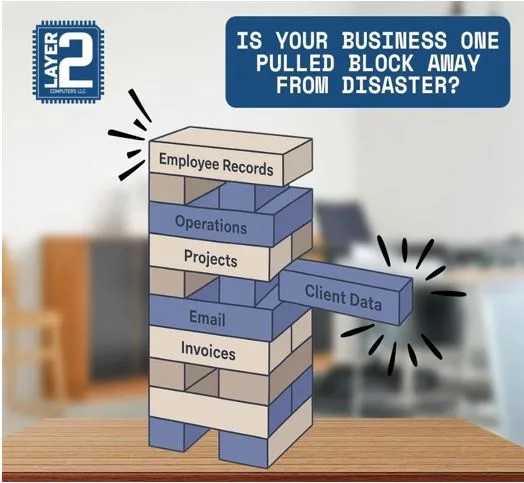The Rise of Real-Time and Remote Interpretation: Technologies, Challenges, and Use Cases
Have you ever attended a global meeting and wondered how everyone understands each other? The answer lies in real-time interpretation – a booming field as companies and events go global. In recent years, remote work and virtual conferences have made on-the-fly language interpretation almost a necessity. Unlike translating a document later, interpretation happens live: interpreters (human or AI) listen to spoken language and instantly convert it so that you can follow the conversation in your own tongue. This immediacy is exactly what bridges language barriers when people speak different languages at the same time.
Technologies Powering Live Interpretation
Figure: A conference microphone and laptop – tools that let speech be captured and translated in real time. Modern technology has supercharged interpretation. We now have AI-powered speech-to-text and text-to-speech engines, cloud platforms, and dedicated apps that handle multiple languages. For example, Google’s Pixel phones can carry on natural two-way conversations in 70+ languages, using on-device AI to translate speech without delays. They even preserve the speaker’s own voice in another language, making conversations feel more personal.
Video meeting tools like Microsoft Teams and Zoom also integrate interpretation: Microsoft’s new “Interpreter” agent can translate each participant’s speech on the fly in your own language. In a Teams meeting, colleagues have reported feeling like they were “on the floor at the United Nations,” because they could speak and hear each other’s languages in near real time. Whether via smartphone apps, cloud services, or headsets, we can now talk across languages almost as easily as chatting in our native tongue.
Challenges of Real-Time Interpretation
Figure: Common remote interpretation challenges – from tech issues to cultural nuances. Of course, this convenience comes with challenges. Real-time interpretation is only as good as the technology behind it. A stable, high-speed internet connection and clear audio equipment are vital; any lag or noise can garble the translation.
For example, dropping frames or echoes during a Zoom call may leave gaps in meaning. Interpreters also face content challenges: they must handle industry jargon and cultural idioms on the fly. That means thorough pre-meeting prep is key – interpreters are often given agendas, slides, and glossaries ahead of time so they aren’t blindsided by technical terms. On the organizational side, scheduling is tricky. Event planners must coordinate qualified, certified interpreters across time zones and languages. In short, real-time interpretation demands both robust tech (good mics, software, backup networks) and smart planning (training, briefing, coordination) to work smoothly.
Key Use Cases
As you’ll see, live interpretation is already changing many fields:
- Global Business Meetings: Imagine a sales call with partners worldwide. Tools like Microsoft Teams now let each person speak freely in their language while AI interprets. Microsoft reports that hearing colleagues in your own language during a multilingual meeting “fundamentally transforms” communication and inclusivity. We’re entering an era where boardrooms and teams are global by default, and real-time interpretation is the glue.
- Healthcare & Telehealth: Doctors and patients benefit hugely. For instance, telehealth platform VSee embedded LanguageLine’s interpreters so providers get one-click access to live interpreters in 240+ languages. This means medical advice can be given accurately and immediately, reducing miscommunication and improving care. By ensuring “accurate, real-time interpretation,” medical teams can make better diagnoses and build trust with patients who speak different languages.
- Education: University lectures often have multilingual audiences. In 2024, roughly 40% of universities began adopting AI speech translation in classrooms to support international students. We see professors giving talks in one language while students follow along in another through live captions or interpreter apps. This technology helps us make learning accessible to everyone, no matter where they were born.
- Travel and Hospitality: Airports and hotels are deploying on-demand interpretation to welcome guests from around the world. For example, Richmond International Airport placed video-interpretation kiosks so travelers can instantly connect to a live interpreter in 240 languages. A family speaking Kinyarwanda could ask an agent for help finding baggage via a tablet, all in real time. The result? Visitors feel “seen, heard, and understood,” turning a stressful arrival into a welcoming experience. Hotel concierge and tourism services use similar systems so staff can answer questions from foreign guests immediately.
- Government & Public Services: Inclusive governance is another big use case. New accessibility laws (ADA in the U.S., EU directives, etc.) push public agencies to provide multilingual services. In fact, language service companies saw a 500% jump in AI interpreter usage by government entities and community organizations in 2024. You’ll find city councils and school boards using these tools to engage all constituents, regardless of language. For the public sector, on-demand interpretation and live translation captions on webinars ensure that no one is left out of important civic conversations.
Complementing Document Translation Services
While live interpretation breaks language barriers in speech, we can’t forget written communication. Companies also rely on Document Translation Services to handle contracts, manuals, websites and more. Professional human translators carefully render documents so the meaning is never lost. As one industry guide notes, “Google Translate is not the same as human translation” when accuracy is on the line. Automated tools are fast, but they can misinterpret legal wording or technical terms. By contrast, expert translators take the time to use resources, peer review and quality checks.
If your team is writing reports or marketing materials for a global audience, using a seasoned document translation service (such as Ulatus’s offerings) ensures that every detail is correct and culturally appropriate. In practice, companies often blend both worlds: we might use AI captioning for an international webinar, and then follow up by having those slides or transcripts professionally translated for publication. Together, real-time interpretation and solid document translation cover all bases of communication.
Conclusion
The revolution in language services is well underway. Real-time and remote interpretation technologies are making multilingual communication faster and more inclusive than ever. We’ve seen how advances in AI, mobile devices, and conferencing platforms let us converse across languages seamlessly. The challenges – like connectivity, jargon, and coordination – are real, but businesses and organizations are learning to overcome them.
As adoption grows in healthcare, education, government, travel and beyond, we’re building a world where language gaps no longer hold us back. In the end, the smartest global strategy uses all the tools at hand: live interpretation for spoken dialogue and reliable document translation for written content. Embracing both makes us truly multilingual – and that benefits all of us in our increasingly connected world.



